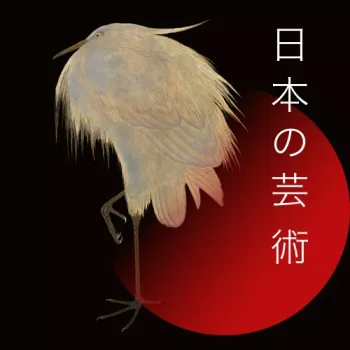Embroidered folding screen c.1880-1900
Wood, lacquer, silk and silk thread, leather, gilt-brass, watercolour, paper, mother-of-pearl, copper alloy | 192.5 x 73.7 x 3.2 cm (each leaf) | RCIN 42037

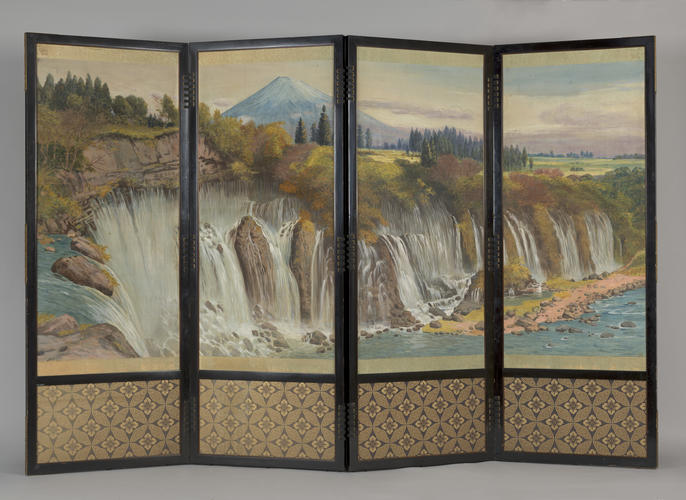
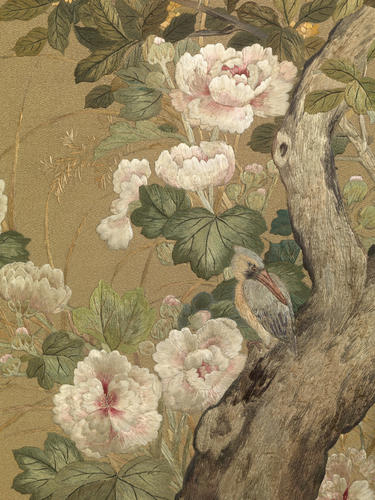

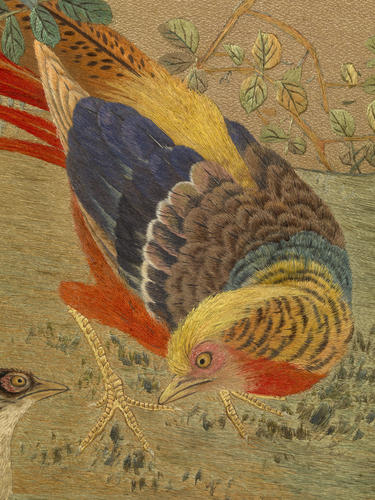
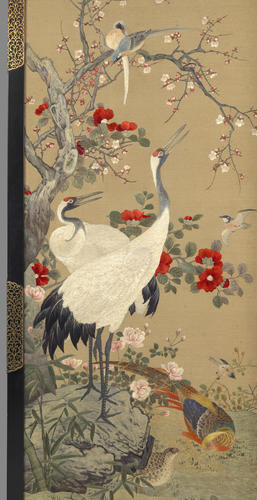

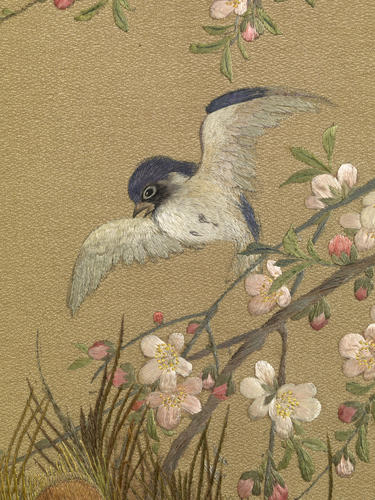

-
Each of the four panels is fitted with cream silk, which is richly embroidered. The first panel features a pair of cranes standing on rocks and grass, with a pheasant underneath tree peony and cherry-blossom branches. The glossy feathers of the cranes are stitched with flat silk, which is also used in the embroidery of the peony blooms and leaves. The second panel depicts a pair of ducks nesting beneath a tree, peony blooms and chrysanthemums, with a kingfisher and other birds in flight. The third features a pair of pheasants with ducks by a gnarled tree stump, with rich red tree peony above, and the final panel shows a pair of peacocks, the male partly displaying his tail to the surprise of the smaller birds around him. Associated with royalty and symbolising beauty and immortality, peacocks are often depicted with peonies in Japanese art. However, in Meiji textiles they were often paired with cherry blossoms instead, as is the case on this screen.
Taken as a whole, the four panels represent the four seasons. Crane and ducks allude to winter; the pheasant, peacock and cherry blossom indicate spring; the peony and kingfisher illustrate summer; while chrysanthemums represent autumn.
King Edward VII is known to have received two embroidered handscrolls as a Coronation gift from the Japanese emperor, but the presentation of this screen by Prince Komatsu Akihito, who attended the king’s Coronation at Westminster Abbey on 9 August 1902, has only recently been confirmed for the first time. After presentation, the screen was moved to Osborne House, where it was displayed in the Indian Corridor.
Each panel elegantly combines a variety of Japanese embroidery stitches, including long and short stitch (sashi-nui) for blending shades of flowers and feathers, lines of staggered diagonals (matsuri-nui) on the leaves and round knots (sagara-nui) at the ends of flower stamens. The reverse of each screen panel is lined with paper and painted in watercolour with a continuous image of the Shiraito Falls with Mount Fuji behind.
Text adapted from Japan: Courts and Culture (2020)Provenance
Presented to King Edward VII on the occasion of his Coronation by Prince Komatsu Akihito, on behalf of the Emperor Meiji, 1902.
-
Creator(s)
(embroiderer)(nationality)Acquirer(s)
-
Medium and techniques
Wood, lacquer, silk and silk thread, leather, gilt-brass, watercolour, paper, mother-of-pearl, copper alloy
Measurements
192.5 x 73.7 x 3.2 cm (each leaf)
Place of Production
Japan





